A NEW STRUCTURE, A NEW SEGA

The executive team, Hideki Okamura (Left), Hisao Oguchi (Middle) and Takayuki Kawagoe (Right).
In 2005, Sega was back in the black in all areas for the first time in a long time. The Sega Sammy structure was completed, and the next generation home consoles were ahead. Like in the formation of twelve new R&D studios in 1998, executive management had a reset. Long time executives Hideki Sato and Hisashi Suzuki retired from Sega, after their thirty – or even in Suzuki’s case – forty years of service.
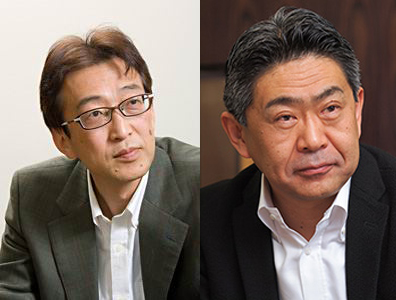
As mentioned in Part 3, Hisao Oguchi would atain the highest executive position which he held until 2008 where he received even wider responsibilities as Chief Creative Officer of Sega Sammy.
Then there is Masano Maeda, who joined in 1991. Madea was responsible for building a new Western management team that made crucial partnerships and buyouts of Western companies, like Creative Assembly, Sports Interactive and Secret Level On a side note: the amount of games developed for Xbox 360 amount to roughly forty games, and on PC to about sixty games. On the Dreamcast, the amount comes to fourteen, and old PC releases amount to sixteen.
A corporate strategy here detailed by Sega Sammy Chairman Hajime Satomi in the 2005 Annual Report:
Hajime Satomi: The anticipated emergence of high-performance, next-generation game consoles this winter (2005) will likely trigger further polarization of home videogame software markets worldwide, as companies lacking development capabilities and capital resources fall by the wayside. Against that backdrop, in Japan’s market we plan to operate with close attention to profitability by taking advantage of reinforced organizational and profit structures and only market software titles that are sure to generate earnings. Overseas, local development capabilities are a must in order to precisely cater to each market’s unique needs.
Hideki Okamura joined in 1987, and was the division and marketing director for the Saturn and Dreamcast. Like Oguchi, he also became a board member at Sega Sammy. Yukio Sugino (who now runs Atlus incidentally) joined 1993, and succeeded managing the arcade teams after Hisashi Suzuki retired. Hiroyuki Miyazaki also joined in 1993 being part of the production and planning unit and was instrumental in managing the Dreamcast line-up, including overseas marketing of Japanese titles. Naoya Tsurumi was a Japanese executive who joined in 1992, and then spent twelve years at Sega of Europe, and then spent 5 years at Sega of America. When Tsurumi returned to Japan, he became a president for a couple years where he restructured the Western Sega branches and also made large acquisitions in the form of Relic in the West and Index/Atlus in Japan. Like Oguchi and Okamura, he became part of the Sega Sammy executive structure.
Smilebit president Takayuki Kawagoe also became part of this structure, assuming responsibilities of Sega of Japan’s output on the consumer market (console/handheld). Amusement Vision president Toshihiro Nagoshi would also join within that responsibility in about 2007, when Yakuza cemented yet another success story for him after Daytona USA and Super Monkey Ball.
But lets get on the new studios which had minor reorginzations and name changes. But lets gloss over that, and just take their current names and structure.
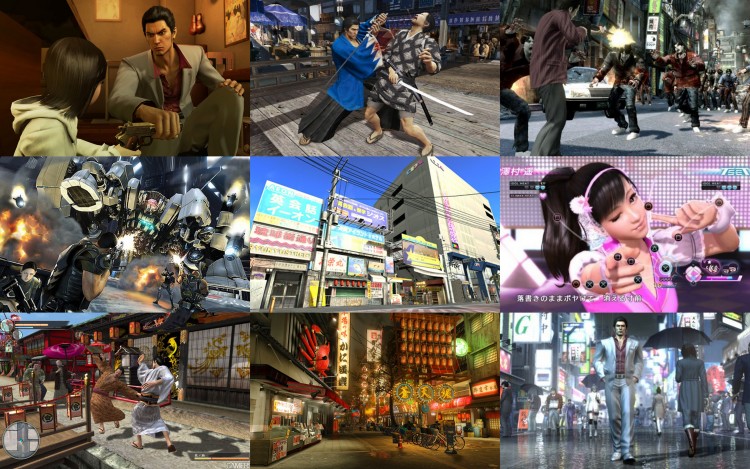
Portraying Japan in a AAA manner has been the main purpose of Ryu Ga Gotoku Studio thus far. The studio is led by Yu Suzuki mentored Toshihiro Nagoshi and utilizes some of the companies most talented employees from Amusement Vision and Smilebit of the past

CS1 is the combined staff of Amusement Vision and Smilebit which resulted in to the 10 games strong Yakuza franchise, probably Sega’s biggest success on home console since Sonic The Hedgehog. Multiple reprints of the first game in Japan, due to much higher demand than expected, was one of the reasons Sega came back into profitability in the consumer business in 2005. Making it easy to see why Sega hinges on the franchise so much. The studio was also given it it’s own identity with Ryu Ga Gotoku studio in 2011, which was used to promote Binary Domain in Japan, which still is the only diversion for the studio. Jet Set Radio director from Smilebit, Masayoshi Kikuchi, would manage this team jointly with Nagoshi. However as time went on, staff would change within that development team as well. When the PSP spin-off games of the franchise came about, Yojiro Ogawa from Sonic Team would join to produce them. Since Yakuza 5, Masayoshi Yokoyama replaced Masayoshi Kikuchi as series producer, when Kikuchi became involved with mobile development. Yokoyama worked with Kikuchi since 1999. Daisuke Sato became a section manager and worked with Nagoshi ever since Scud Race in 1996. Then there is the second section manager, Kazuki Hosokawa, who has art background since Panzer Dragoon Zwei.
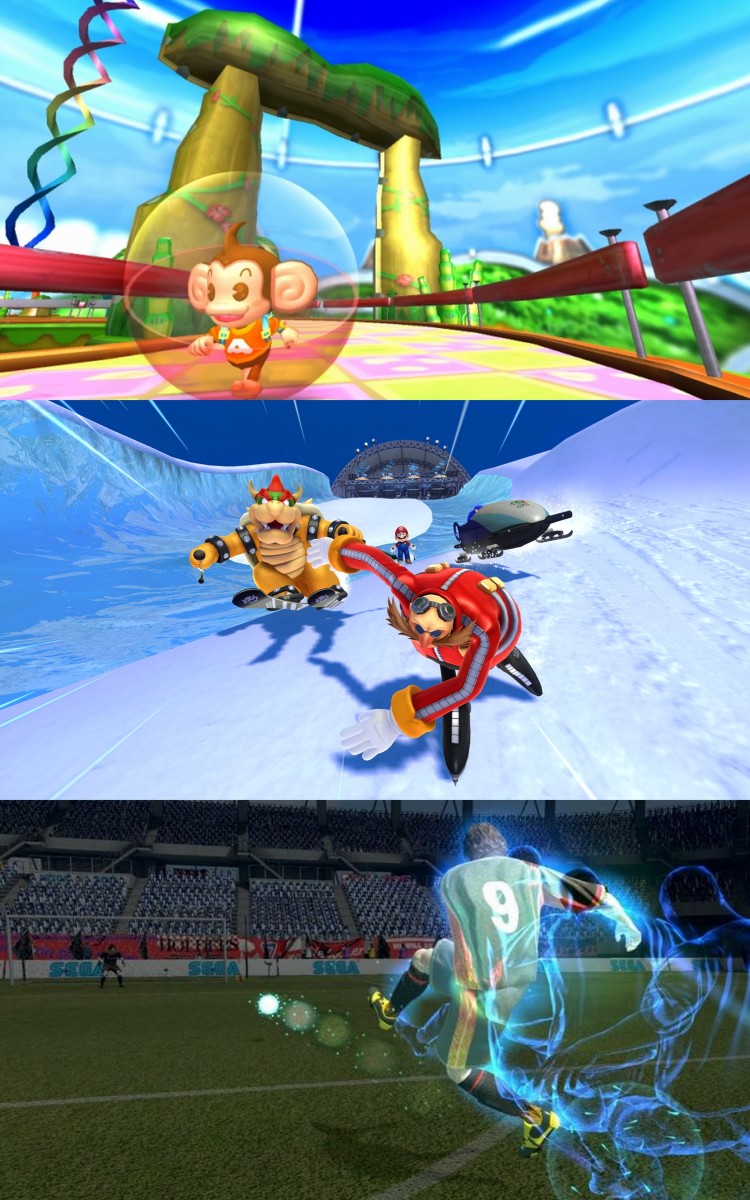
Yakuza isn’t the only thing the division does. Sports games were also a strength of Smilebit with their sport sims and AV with Virtua Striker. Mario & Sonic at the Olympics was a success as we know, and their Let’s Make sport sims would continue. This part of the division was managed by subordinates of Takayuki Kawagoe at Smilebit such as Masamitsu Shiino, Takaya Segawa and Osamu Ohashii who all have sports backgrounds since the 90s, although Shiino also did The Typing of the Dead. Also there are still the Super Monkey Ball games, in which Nagoshi had his last hand-on director position with Banana Blitz on the Wii. Jun Tokuhara took the director seat since then and has worked on the series as 2D system programmer since the first game.
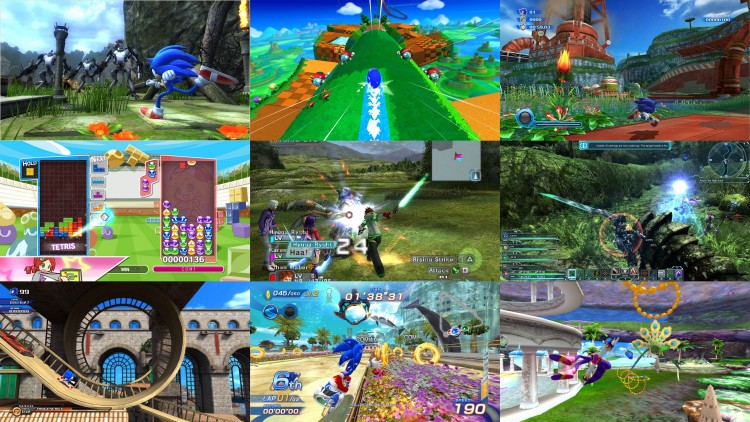
Franchises with Sonic Team origins certainly had their highs and lows on consoles. Sonic had some of the worst games of all time, while at least Phantasy Star Universe and NiGHTS: Journey of Dreams were merely disappointing. However Sonic Generations was a game that many have enjoyed, and PSO2 is the culmination of the the entire online franchise, and became one of Sega’s biggest cash cows.
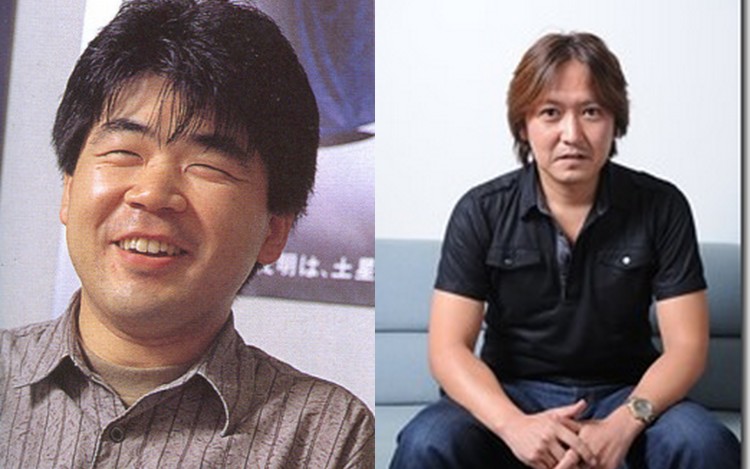
CS2 is essentially Sonic Team with the evergreen Sonic and Puyo Puyo franchises. Akinori Nishiyama would replace Yuji Naka and had several producers and directors were under his wing, with the addition of him having the director role of the Dimps developed Sonic games, such as the popular Sonic Rush. Takashi Yuda would produce the Sonic Riders series after relaunching the Puyo franchise with Puyo Pop Fever. Masahiro Kumuno from Overworks would produce Sonic the Hedgehog (2006). Yojiri Ogawa would produce and direct Sonic and the Secret Rings. For other directors, Takumi Yoshinaga was director on the Space Channel 5 games, Feel the Magic XX/YY, its sequel Rub Rabbits, Puyo Puyo, the Mind Quiz and Kokoro Scan games on Nintendo DS, and then Project 575 on the Vita. Shun Nakamura directedSonic the Hedgehog (2006), and then spent several years at Sega as a producer, eventually leading his own original project again, Rhythm Thief and the Emperors Treasure. Kenjiro Murimoto started as an enemy game designer on Sonic Adventure and became a director and producer with the Sonic Riders games, and then produced Project 575. Mizu Hosoyamada would become the main person behind Puyo Puyo eventually, after Takashi Yuda would produce Sonic Riders. Tetsu Katano, a programming veteran at Sega with 3D Sonic titles joining the company in 1995, would direct Sonic and the Black Knight. Yoshihiso Hashimoto would direct Sonic Unleashed. He started as a programmer since Sonic Adventure, with his first director project being Sega Superstars for EyeToy. Through all this however, Sega would settle with a main producer on the Sonic series with Takashi Iizuka. After directing/producing Shadow The Hedgehog and NiGHTS: Journey of Dreams, Iizuka would become the main producer on the series starting with Sonic The Hedgehog 4: Episode 1 and all subsequent Sonic games. In turn, Nishiyama would go to CS3 and take the Phantasy Star franchise with him, allowing Sonic Team to fully focus on Sonic and Puyo.
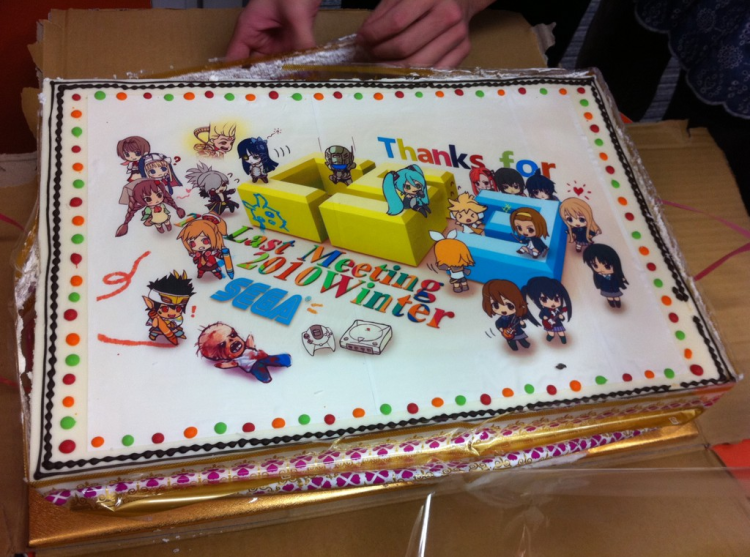
Internally Sega once made cakes for each of their divisions, celebrating a year. This cake portrays how busy CS3 has been in 2010. On the cake you can spot Shining Hearts, Phantasy Star Portable 2, K-On, Hatsune Miku, Vanquish and the Dreamcast (indicating the Dreamcast ports in 2010)
CS3 is basically where everything else ends up, with a lot being from Overworks/CS2/R&D7, Sonic Team’s Phantasy Star team, as well as co-developed/published games by Sega of Japan (and even localizations of games from Sega West). It is headed by a subordinate from Noriyoshi Ohba, Akira Nishino, who joined in the early 90s doing game design for Sonic CD, being director for Ristar and eventually doing directing work on the first couple of Sakura Wars games. He then became chief planner for Overworks and then Sega Wow.
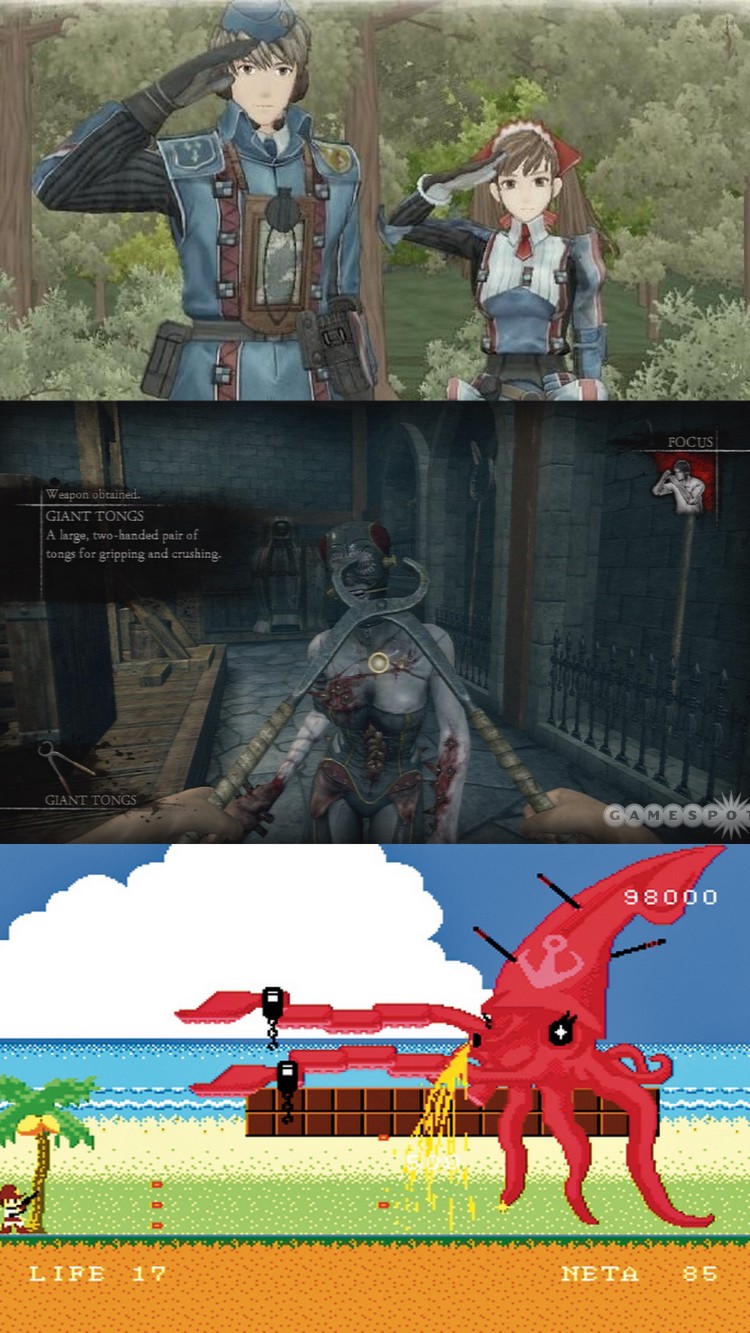
For producers there are Ryutaro Nonaka whose major project would be Valkyria Chronicles. Nonaka joined in 1993 and directed the 32X game Metal Head, as well being a major contributor to the Sakura Wars series and also producing the PS2 Nightshade game. Shinji Motoyama is also a producer, he began at Sega doing design work on Nightshade and Blood Will Tell, and then worked on the licensed Bleach and Doraemon games, and then would further contribute to the PSP Valkyria Chronicles entries as director and then producer. Takahura Terada, after contributing to Sakura Wars, was involved in Valkyria Chronicles and then Phantasy Star Portable 2. Lastly, Shuntaro Tanaka would become one of the producers in that department after directing Skies of Arcadia and Valkyria Chronicles, and then became a senior director for Phantasy Star Online 2. Takashi Ozawa would be one of the game design leads for the Valkyria Chronicles series and would then switch to directing the Shining series, starting with Shining Blade.
Former Sonic Team members, Takao Miyoshi and Satoshi Sakai, would further continue the Phantasy Star franchise. In addition, Miyoshi did the quirky Poles Big Adventure project for WiiWare. Sakai started at Sega in 1995 doing various art jobs, and then becoming art director on the first Phantasy Star Online.
Tsuyoshi Sawada is a producer that handles the modern Shining franchise where Tony Taka is the charcater designer, he originally joined in 1992 in the field of marketing. Seiji Hayashi is also a producer who I know nothing about, but he would produce Hatsune Miku: Project DIVA games starting on PSP. Yoichi Shimosato is a producer who joined Sega and did quite a lot of work, first on licensed Yu Yu Hakusho and Doraemon games on the Mega Drive, then co-directing Shadow Squadron on 32X and then worked as a director on Camelot developed Shining games on the Saturn and spent time at Smilebit and Amusement Vision. He would return to the Shining franchise as a proucer, with Neverland developed Shining Force NEO and EXA and also Shining Force Feather, and also produce on the imageepoch developed Sands of Destruction. Most recently he produced Hero Bank.
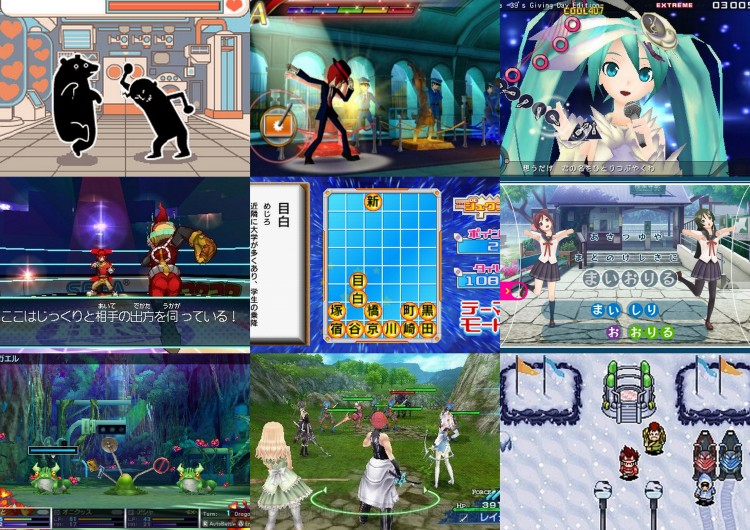
With the large market opened in Japan by the DS and PSP handhelds, Sega saw it fit to make edutainment/casual software, transmedia kids games, rhythm titles and role-playing games, all squarely aimed at the Japanese.
Rieko Kodama was involved in a couple of the miscellaneous edu-tainment and “training” line of games, branded as “Naruhodo” which translates to english as “Hm…I see” or similar phrases. Sega made these games for a number of years on Nintendo DS and PSP (over ten games, even one for PC, Kaseki Play) but then Kodama returned to RPGs with the 7th Dragon games.
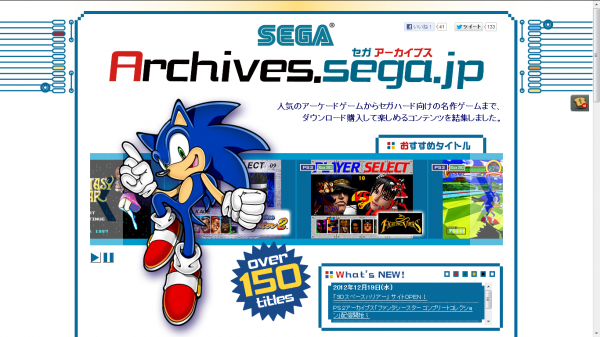
Sega has a large catalouge of games, and Sega has their own website to cater to that
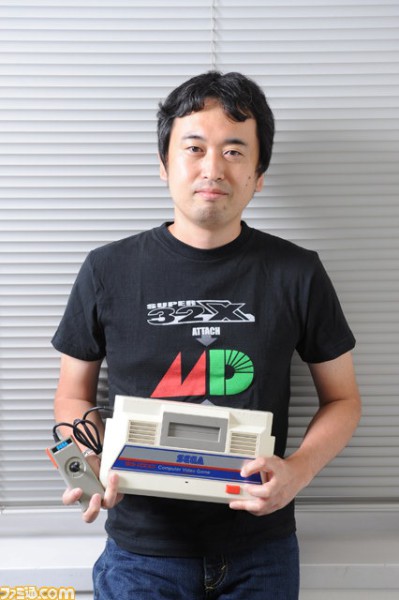
Yosuke Okunari who has recently received attention with the 3D Classics, was previously involved in production and marketing work since the mid 90s. He has been behind archive, retro and download releases since about 2004, be it the Sega Ages series, download releases on Virtual Console and more. He basically manages Sega’s back catalogue, and is also very knowledgable about Sega’s history in general.
All in all, I’ve mentioned quite a few co-developed and published games here, and that is a system Sega employs when it comes to producing titles internally and externally in Japan. Akinori Nishiyama, Akira Nishino, Takayuki Kawagoe, Hiroyuki Miyazaki, Toshihiro Nagoshi and other higher ranking managers of departments would come together to form what I would say is consolidated “line-up-management” involved in green lighting certain titles, where they are either credited as “Development Support”, “Chief Producer”; “Special Thanks” or “Executive Supervisor”. As an example, the Game Freak developed Tembo the Badass Elephant has Takashi Iizuka and Shun Nakamura as Supervisors, and Akira Nishino and Yoichi Shimosato as Development Support. Another example would be Dengeki Bunko Fighting Climax, which is developed outside of Sega, but has Ryutaro Nonaka as a Producer and Takahura Terada as a Director. The 2014 PS3 game Shining Resonance, has Takeshi Ozawa as a Director, and has Kazuhiro Tsukata as Technical Director. Tsukata actually worked with Sega as a programmer since the very first Sakura Wars. Another example of Technical Support is Yoshiaki Endo who worked as lead programmer on Phantasy Star IV. This shows that in-house staff still do plenty support for outside developed games.
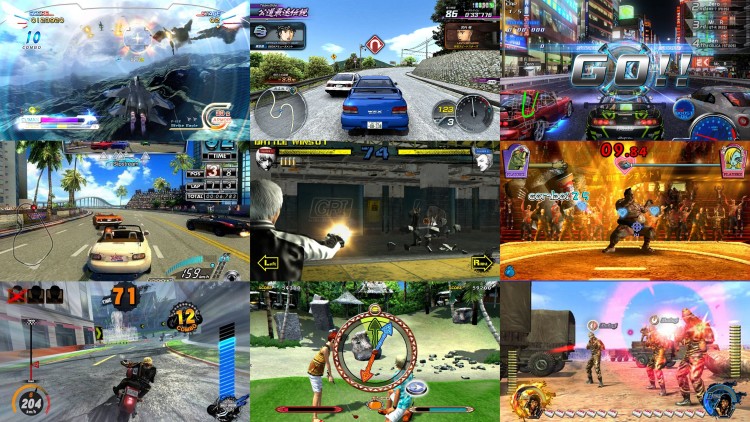
Sega is known worldwide for it’s quickthrill, little language barrier games, however it is not the financial focus of Sega anymore.
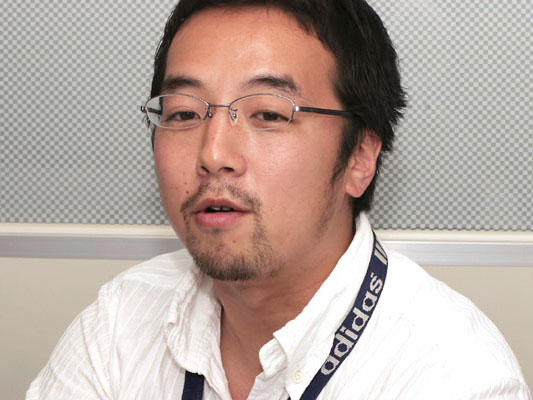
Lets move on to the arcade teams. WOW Entertainment has its old name AM1 back. WOW/AM1 also has people who began work on console games moving to arcade development such as Kazunari Tsukamoto. Atsushi Seimiya begins doing managerial work which he still does, however I am not certain if he is still at Sega or not.
A big game for AM1 would be Sangokushi Taisen. Following the arcade cabinet concept of WCCF, the game becameone of the most popular RTS in Japan. That game was made by the Guru Guru Onsen creators, producer Yasuhiro Nishiyama and director Toru Ohara. The success of the game, elevated Yasuhiro Nishiyama to become the next most important arcade manager following Kataoka. Takashi Oda is also part of the division and as the light gun veteran, he directed House of the Dead 4, the RAMBO light gun game as well as Harley Davidson: King of the Road. Today he has a supervisory role in the AM1 division.
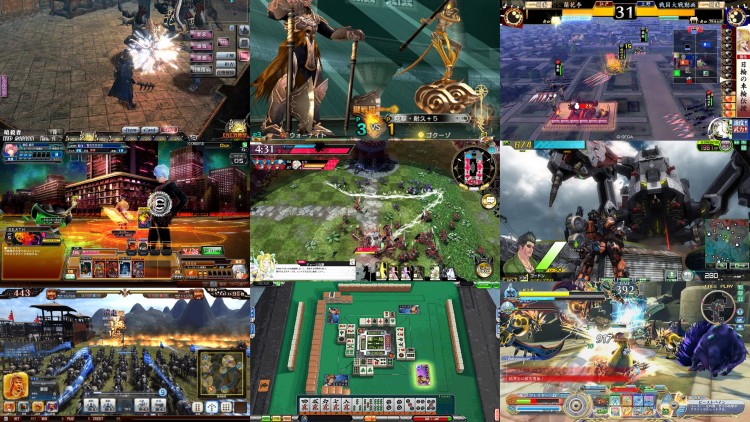
Complex games squarely aimed at the hardcore Japanese are the main financial focus for Sega.

AM2 is headed by Hiroshi Kataoka, after the presidential role switched from Yu Suzuki in 2003. In 2005, Kataoka was in charge of all arcade games, in addition to heading AM2. At AM2, Makoto Osaki would further co-manage the studio, along with directing Virtua Fighter 5. After VF5, Makoto Osaki produced the arcade and 3DS versions of Hatsune Miku – which explains the Hatsune Miku series propensity for including AM2 arcade fan service. Noriyuki Shomida is a new producer within AM2, having first worked on Virtua Fighter 4, and then producing Sega Golf Club, Ghost Squad, After Burner Climax and Border Break.
Hitmaker was called AM3 again, and Mie Kumagai would lead it. Mie Kumagai would further manage the Virtua Tennis games and the Lindbergh version of Derby Owners Club. Kenji Kanno would strangely work on one of the kids card arcade games, Dinosaur King. He then would create the baseball counterpart of the WCCF, Sega Card Gen MLB.
Kenji Arai from Sega Rosso would further manage Initial D Arcade Stage. Tomohiro Kashiwada would further manage WCCF, succeeding Junichi Tsuchiya. Despite big hit franchises, AM3 was dissolved in 2008, and people like Mie Kumagai and Kenji Kanno with their games they worked on were assigned to AM2, while others were assigned to AM1. So all in all, Sega decided to operate two (fairly large) arcade studios.
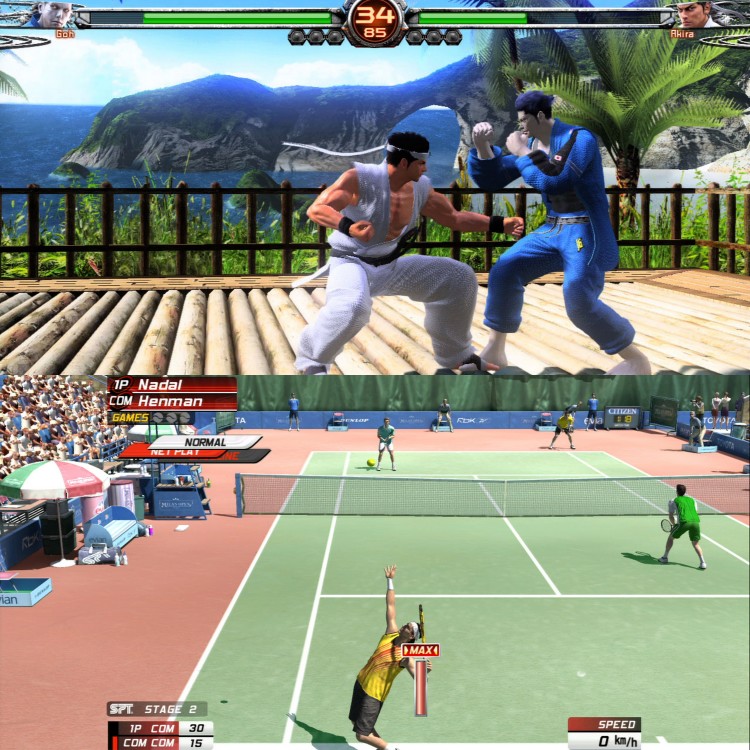
For the arcade teams, the focus would shift as well with a vastly smaller market. However Sega still had vast profits from the large social arcade games introduced by Oguchi and internet games introduced by Kataoka. Sega operated a dozen of these games with continuos updates. A vastly different arcade world than that of the 80s and 90s. While the arcade philosphy of quick paced games that encapsulates the game in three minutes is still there – complex and competetive in the vein of Virtua Fighter 4 and 5 is the main focus. With that said, I’d say it’s definitely time for Virtua Fighter 6!
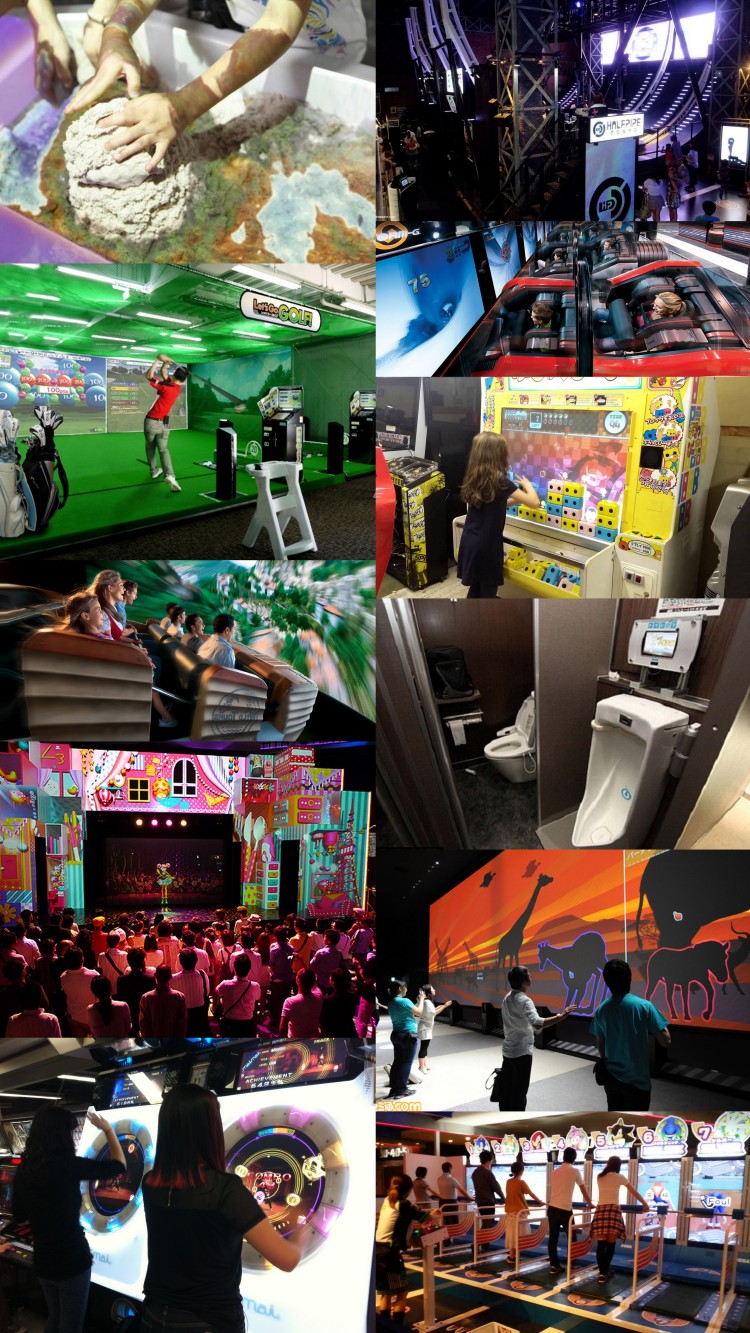
Despite leaving hardware, many of the former engineers joined the arcade sector and continue to bring out novel attractions for entertainment venues.
Lastly I want to go into the arcade divisions that aren’t quite related to the video games, which were R&D4 and R&D5 previously.
The kids arcade game genre introduced by R&D5 and manager Hiroshi Ueamera continued to grow and grow, prompting Sega to make more and more titles, growing into its own category and division. In total Sega made 23 kids arcade games. Then there is the AM Hardware/Mechatronics division, that does all medal, crane games and cabinets as usual. Managerial duties of the overall arcade divisions, which aren’t necessarily related to video games, are handled by true veterans at Sega, namely people from Hideki Sato’s engineering team. Hiroshi Yagi joined the company in the late 70s, and was behind a good amount arcade hardware and even the Game Gear. Masami Ishikawa designed the SG-1000, Master System, Mega Drive is also involved in arcades to this day.
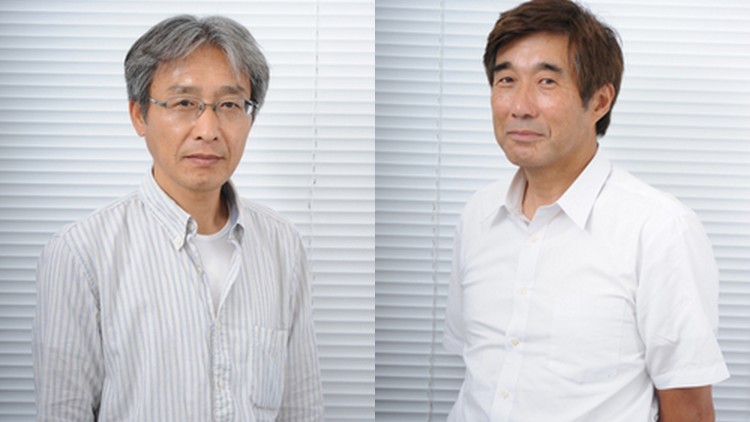
Masami Ishikawa (left) and Hiroshi Yagi (right)
Lastly, everyone going mobile – including Nintendo – is the big thing these days. However Sega has been there since the beginning, with the feature phone. Sonic Cafe started in 2000, which was made by music studio Wave Master, mentioned in Part 3. Then in 2004 Super Real Tennis, by Kazunari Tsukamoto, was the next step in feature phone games. Kazunari Tsukamoto would further manage feature phone games, until he left Sega and left the video game industry entirely but was still with a Sega owned company, DartsLive, as an Executive Officer. This is pretty similar to other AM1 veterans, like Rikiya Nakagawa and to a much lesser extent Makoto Uchida (who is still involved in game development in China). Long time visual designer and overall RPG veteran Toru Yoshida (Phantasy Star II and IV, Sakura Wars series) also is part of the mobile division, all the way from the feature phone to current mobile devices.
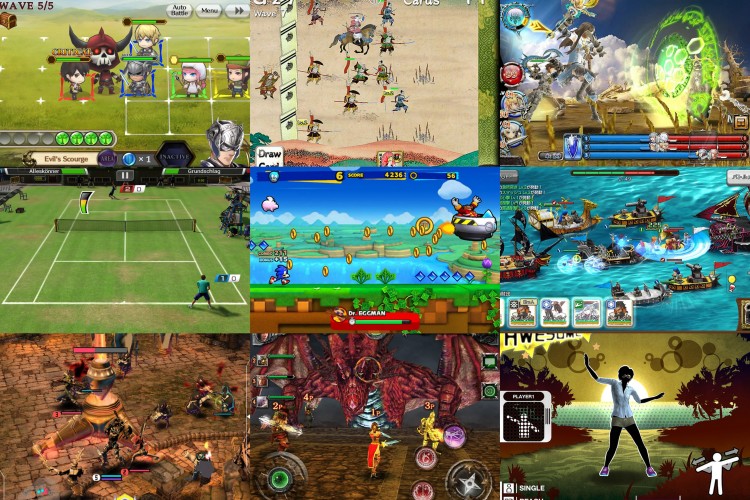
Examples of Sega console and arcade staff making mobile and F2P games. Kingdom Conquest in 2010 was a game that offered a deeper mobile experience than other games at the time, leading to Sega’s first runaway success in the market.
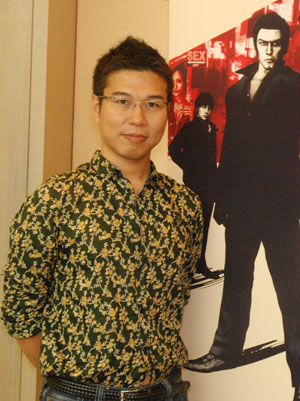
However with the advent of the smartphone in 2008, Sega (specifically Sega of America) quickly took advantage of it with games such as Super Monkey Ball and Chu Chu Rocket. Super Monkey Ball, an App Store launch game, quickly ascended the charts and put Sega in a fortunate position in the market, which helped the company as a whole. In Japan, developers established their own mobile division, and have since been a channel of growth for Sega. Staff from CS1 were annexed to lead the mobile games division, such as Yakuza-veteran Masayoshi Kikuchi and sports people like Takaya Segawa and Masamitsu Shiino. CS1 staff major games would be Kingdom Conquest 1 and 2, Go Dance, Demon Tribe, Dragon Coins, Monster Gear and Sen No Kaizoku (which was at TGS 2015). CS2/Sonic Team also had their staff work on Sonic Runners and Puyo Puyo!! Quest. CS3 staff, like Shinji Motoyama, would produce The World End Eclipse which was featured at the recent Tokyo Game Show 2015. Cross-platform games would increase steadily as well. Vita versions of Kingdom Conquest (as Samurai & Dragons) and Chain Chronicle were made. The Mahjong arcade games was ported to PC and mobile. And the The World End Eclipse is avaible on PC and Vita. A version of Phantasy Star Online 2 calledPhantasy Star Online 2 es also came out on mobile.
Arcade staff have also made mobile games, starting with the Bloodshow series of games from the Nishiyama led AM1, which was a prototype for the successful Chain Chronicle. Old AM3 staff, Mie Kumagai, would also become a contributor to the mobile party as well, with conversions of Derby Owners Club, Virtua Tennis and a game called Squads. Kenji Kanno oversaw the Crazy Taxi: City Rush mobile game, made by the UK studio, Hardlight.
Let’s count the number of games from 2005 to 2015 (I’ll count the Sega Ages series as one):
During this time, the original Xbox, GBA and PS2 consoles still managed to release quite a few games. On PS2 14 games were produced, 8 external ones (17 JP only). On Xbox, 2 more games were made and on GameBoy Advance, 2 as well (JP only). On Nintendo DS, 43 games were produced and 11 external ones (36 JP only). On PlayStation Portable, 26 games were produced, 10 external ones (28 JP only). On Xbox 360, 15 games were produced, 6 were external ones. 18 games were produced on Wii, 9 external ones (11 JP only). 29 games were produced on PlayStation 3, 8 were external (14 JP only).
Now lets go to the current systems: On 3DS, 12 games were produced, 4 external ones (8 JP only). On Vita, 13 games were produced, 2 external ones (10 JP only). On Wii U, 5 games were produced (2 JP only). On PS4, 3 games were produced, 3 external ones (5 JP only). On Xbox One, 1 game was produced, one externally (1 JP only). On, PC, 9 games were produced. (all JP only)
On arcade: 20 games were produced on the Lindbergh, 7 of which got continuously updated (7 JP only). On the RingeEdge/Wide hardware, 18 games were produced, 12 of which got continuosly updated, 2 of which are carried over from the Lindbergh (9 JP only). On the newest Nu platform, 6 games were produced, with Hatsune Miku being carried over from the RingEdge (all JP only). On the Naomi based System SP hardware, Sega made 6 games (3 JP only).
On mobile: Sega produced about 38 games internally, with 8 being iOS exclusive, and 10 being external (25 JP only).
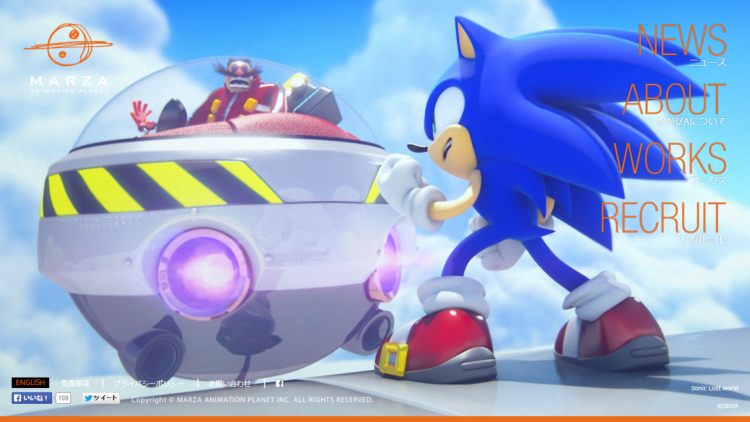
In a move similar to the Dreamcast days and Wave Master, Sega gave it’s CGI production team it’s own branding and made it it’s own company. The company is called Marza Animation Planet and will be animating the feature-film Sonic movie.
UPS AND DOWNS AND THE FUTURE
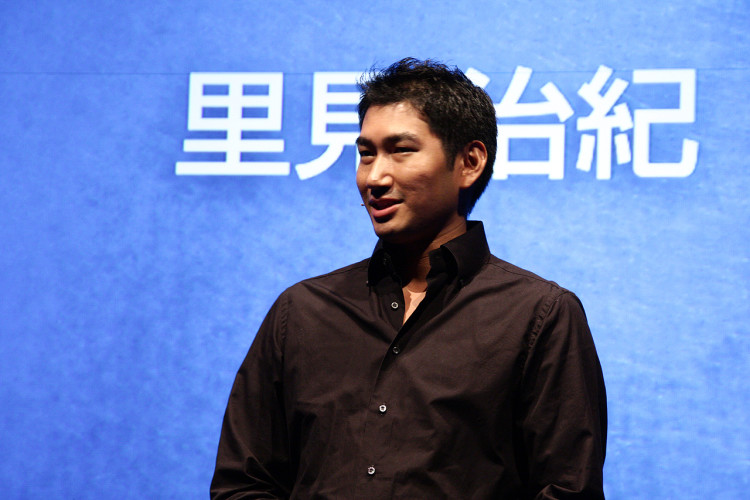
Haruki Satomi
Sega has been financially healthier than it was during the Saturn and Dreamcast years. However in the hearts of gamers, those were periods where Western gamers loved Sega the most, even though Sega lost the most money during this period. Either way, Sega had it hard being a respected brand overseas, while at the same time being financially sound.
Increasing the Western development infrastructure with buyouts and partnerships isn’t a bad thing, and good games came out of it. But in turn, Sega of Japan became more and more isolated internationally, and thus the “Sega” style game made by Sega developers has not enjoyed a big presence. In the past this was different, Sega Japan simply preserved much more staff. Arcade teams had much more console staff, I can count the amount of console games released by arcade teams since since 7th gen right here: Virtua Fighter 5, After Burner Climax, Sega Golf Club, Virtua Tennis 3, Virtua Tennis 4, Hatsune Miku: Project DIVA, Initial D: Extreme Stage, The House of the Dead 4 and ports of older arcade games. Now compare this to Sega’s own consoles, and how probably most of the library is from AM1-5, that’s kind of a bummer. Same goes for console games directly developed for international audiences. I’ll leave Sonic out of this, but on the 7th gen of consoles basically amounts to Valkyria Chronicles, NiGHTS: Journey of Dreams, Super Monkey Ball games, Rise of Nightmares, Phantasy Star (well, until recently) and Binary Domain. Again compared to the past, not that great.
Of course, there is also the whole Sonic can of worms. He is the star and flagship series of Sega, so bad games would naturally hurt the company. Either way, it’s not like lack of Japanese Sega games or bad Sonic games (well until Sonic Boom maybe) are things that hurt Sega monetarily. In fact when Japanese Sega games are attempted at the West, they are rarely a success.
But for Sega’s Japanese teams, mobile is the only way to go, since every other market in Japan is shrinking. It’s been hard for Sega of Japan’s staff to find success in the West. In fact for Masano Maeda, one ambition was set to make a few million selling games a year by internal Japanese teams – but as we know that fell flat on its face. But settling on modest sales of niche titles is maybe one way to go – as recent comments from probably Sega’s youngest executive Haruki Satomi indicate. Haruki Satomi is the son of Sega Sammy head Hajime Satomi. Groomed to be for the “digital future” he has helmed digital departments in the US, as well as mobile worldwide, in his mid-twenties to early thirties. Either way, Sega stays determined as ever, as I will show in some recent quotes:
Hajime Satomi, Sega Sammy Chairman: October 2014 will mark 10 years since the management integration of SEGA CORPORATION and Sammy Corporation, which established the SEGA SAMMY Group. Assessing our overall progress in the ensuing years, I feel, frankly, that the past decade has left us with an extremely large number of tasks. As SEGA’s lackluster business results show, we have not exploited to the fullest the SEGA brand’s potential. This is primarily because we have been unable to change SEGA’s corporate culture rapidly enough to keep up with changing needs. To continue growing, we have to solve such structural problems in existing businesses urgently.”
Naoya Tsurumi Sega Sammy, Senior Vice President: SEGA used to be an “innovative” company, consistently providing products ahead of its time. In recent years, however, I sense the company’s innovative DNA has weakened. Fear of taking risks leads to missed business opportunities. Therefore, I want to return to our origins and establish a fertile corporate culture that encourages us to take on challenges without fear of failure.
Haruki Satomi, Sega Games CEO: ““We did our best to build a relationship of mutual trust with older fans of Sega, but looking back, there’ve been some titles that have partially betrayed that [trust] in the past 10 years. Sega in the ‘90s was known for its ‘brand, but after that, we’ve lost trust, and we were left with nothing but ‘reputation. For this reason, we’d like to win back the customers’ trust, and become a ‘brand,’ once again”
Toshihiro Nagoshi, Sega Chief Creative Officer: “Sega’s traditional image is of the young upstart that produces wildly out-there titles and doesn’t seem too pre-occupied with bottom-line profits. That’s what you want the Sega logo to represent: things that seem crazy at first, but really surprise you when they take form. I don’t want to do away with the expectations that people have had for us since way back. It wouldn’t seem right if Sega acted all firm and conservative, would it? I think I’d like to keep that.”
Hiroshi Kataoka, Sega Creative Officer Arcade R&D: “Sega has changed a lot over the years. From time to time, it undergoes quick, dramatic change. I don’t really have any time to worry much about what went on in the past. Sega is Sega, and will always be Sega. I’m constantly looking towards the future.
Now even if you take the above as just meaningless PR, it is still good to know that Sega knows that they need to do better, and have much more potential. Either way, with executive staff of Sega being groomed by some of the biggest industry luminaries like Rikiya Nakagawa, Noriyoshi Ohba, Yoji Ishii, Hideki Sato, Hisashi Suzuki and Yu Suzuki, Sega definitely has the potential to deliver. Until then, I leave with the 55th Anniversary celebration video, and the good old Sega saying:
TO BE THIS GOOD TAKES AGES; TO BE THIS GOOD TAKE SEGA
Sources:
http://www13.atwiki.jp/game_staff/pages/603.html (Japanese documentation of Sega, 2000-currently)
http://www13.atwiki.jp/game_staff/pages/213.html (Japanese documentation of Sega, 1984-2000)
https://sega.jp/fb/album/ (Japanese Interview of Sega Staff, 80s and 90s)
http://sega.jp/fb/creators/ (Japanese Interview of Sega Staff, 2000-2003)
http://sega.jp/fb/segavoice/ (Japanese Interview of Sega Staff, 2004-2005)
https://web.archive.org/web/20130531003141/http://sega.jp/segavoice/ (Japanese Interview of Sega Staff, 2005-2008)
http://segaretro.org/Video_Games_produced_by_Sega
http://segaretro.org/Arcade_video_games_produced_by_Sega
[Editors Note: I want to personally thank Trippled for all the hard work in this four part look back (and forward) at SEGA of Japan’s development efforts. Also a thank you to the readers who have followed the series. Don’t fret! We aren’t finished yet, stay tuned for more SEGA retrospectives!]
Read the full History of Sega Japan R&D retrospective:
The History of Sega Japan R&D, Part 1: The Origins and the 80s
The History of Sega Japan R&D, Part 2: The 90s Golden Age
The History of Sega Japan R&D, Part 3: Innovative Heights and the End of an Era
The History of Sega Japan R&D, Part 4: The Current Sega


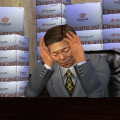


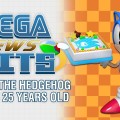
Nica and detail article. Very enjoyable to read.
Btw.. What game is this screenshot from?
http://fs5.directupload.net/images/151120/k3ny9su9.png
“PSO2 is the culmination of the the entire online franchise”, according to whom? Objectively, the game’s just a cookie-cutter F2P MMO with the gambling and RNG dials cranked up to maximum. Just because it’s popular and people spend obscene amounts of cash on it to get revealing bikini costumes for their so kawaii characters doesn’t mean it’s actually any good compared to other games in the online series. It’s extremely shallow in gameplay, brings nothing new to the table and is overall average at best. In my opinion, Universe was far superior and wasn’t trying to be a poor man’s Monster Hunter like PSO2 does.
It’s like calling Black Ops 2 the culmination of the Call of Duty franchise based entirely on its sales numbers, rather than the game’s actual merits. Which there are hardly any.
Nice article, though. Was a fun read.
A poor man’s monster hunter? You mean the same monster hunter that was directly inspired by the original pso, that would go onto inspire lot’s of other linear action rpg games like destiny and xenoblade…
great article! wonderful history! thank you
Always happy with positive feedback on these. And thank you Barry for making further improvements on these.
Too many Sega history articles focus on the meddling on international Sega branches and give a cyncial ending only at looking at a certain side of output, and one side of the company. That’s why I wrote this.
Excellent article, and kudos to you for all of the time that you and your team invest into this website.